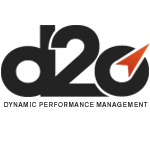Get ahead of the game with our comprehensive buyer's guide for productivity software. Streamline your workflow and stay organized with the best tools on the market.
Maximizing productivity is a top priority for businesses and individuals alike. With technology advancing at an unprecedented rate, there's never been a better time for productivity software to take center stage. If you're on the hunt for the best productivity application for your business or personal use, look no further than this comprehensive guide. Our team has researched about these solutions, compiling their features, benefits, and drawbacks to bring you a top-notch buyer's guide that will equip you with the necessary knowledge to enhance your productivity and reach your goals efficiently and effectively.
What is productivity software?
This refers to a category of applications that enable users to accomplish various tasks and optimize their productivity levels. There are different types of productivity software, including word processors, spreadsheet applications, project management software, presentation tools, and email clients among others. These applications help users accomplish personal and professional tasks more efficiently, collaborate with others, and keep track of progress. Worldmetrics stats show that 90% of companies using productivity technology reported improved workforce efficiency.
Its common use cases include:
- Writing and editing documents
- Creating and managing budgets
- Organizing and analyzing data
- Scheduling and managing projects
- Creating and delivering presentations
- Communicating with others through email and messaging
This platform is commonly used by various types of organizations, including small businesses, corporations, government agencies, non-governmental organizations, educational institutions, and individuals. The systems helps organizations manage their workflow, communicate and collaborate internally and with external partners, and increase efficiency and productivity.
What are the advantages of investing in a productivity solution?
It is crucial to employ tools and technologies that help streamline operations and increase efficiency. Here are some of the main benefits of using a productivity platform:
- Increased efficiency: It can automate repetitive tasks, reducing the time and effort required for manual processes. This means employees can focus on higher-value tasks that require creativity and critical thinking, ultimately increasing overall productivity. On average, productivity tools help increase work efficiency by 34%, thus freeing a lot of time for programmers to focus on coding and problem-solving rather than manual and time-consuming routines.
- Improved collaboration: It can also facilitate real-time collaboration between team members, regardless of their location. This means projects can be completed faster and more efficiently, with stakeholders able to provide feedback and make real-time changes.
- Better time management: A wide range ofproductivity software options include features such as to-do lists, calendars, and time-tracking tools. These can help employees manage their workload more effectively and prioritize tasks, reducing the risk of missed deadlines or overlooked responsibilities.
- Enhanced data management: Productivity technology can store and organize data, helping businesses to make more informed decisions. With features such as data visualization and analysis tools, businesses can gain insights into their operations and identify areas for improvement.
- Cost savings: By automating processes and improving efficiency, businesses can save money on labor costs and other expenses associated with manual processes. Additionally, productivity software can help prevent costly errors and reduce the risk of data breaches.
10 main features of productivity software
This category of software is designed to help users work smarter and accomplish more in less time. It is an essential tool for businesses of all sizes and sectors. Here are 10 of its most common features:
1. Task management:
Business productivity software often comes equipped with task management tools to help users manage their workload effectively. Tasks can be assigned, tracked, and prioritized with deadlines and reminders.
2. Time tracking:
Time-tracking features in productivity software make it easy to keep track of how much time is being spent on specific tasks, projects, or clients. Time can be reported and invoiced accurately, leading to better project management and billing.
3. File sharing:
Collaboration is key to achieving team productivity and this solution allows team members to easily share files, attach files to tasks, and collaborate on projects in real-time.
4. Note-taking:
To-do lists and note-taking features are a popular component of productivity software that allows users to quickly jot down and organize their thoughts, ideas, and reminders.
5. Calendar management:
Productivity technology enables users to create, manage and share calendars, schedule appointments, and set reminders for important dates as well as lets you track your meetings and appointments.
6. Email integration:
Most productivity software solutions can be integrated with email accounts, allowing users to manage emails without leaving the platform.
7. Analytics:
Analytics features in this tool make it easy to analyze productivity metrics, including time tracking data, task completion rates, and project progress.
8. Project management:
Project management features in productivity software provide a complete workflow for projects, from planning and tracking, managing tasks and teams to reporting and invoicing.
9. Expense tracking:
Expense tracking functions help track expenses related to any task or project, allowing businesses to stay on top of their expenditure and make informed decisions.
10. Customer management:
Customer management tools allow users to store client information, track communication history, and manage customer workflows, ensuring they deliver the best customer experience.
Key considerations when adopting a productivity platform
With an abundance of application options available in the market, choosing the right one for your business can be a challenge. Let us delve into the factors businesses should consider before purchasing your business productivity software.
- Firstly, it is crucial to determine your business needs. Do you need project management tools, or software with team collaboration tools, customer relationship management (CRM), or accounting? Identify the core areas that require improvement, and select one that caters to your business requirements.
- Secondly, consider the scalability of the system. As your business grows, it is essential to have one that can grow with you. Ensure that it can handle a larger workforce, multiple projects, and increased data storage requirements.
- Thirdly, evaluate the solution's ease of use. The program you choose should be user-friendly and should have a simple interface that is easy to navigate. Complex productivity software tools can be challenging for your staff to learn, leading to a waste of resources and time. Additionally, consider the installation and training required before you can use the platform.
- Fourthly, take into account its integration capabilities. It is rare to find one package that meets all your business needs. Therefore, it is essential to consider one that can integrate with other tools you currently use. This helps reduce the need for duplication of data and tasks.
- Fifthly, consider security features offered. It is crucial to ensure that it meets security standards and includes features such as user authentication, data encryption, and backup and recovery tools to safeguard your data against cyber-attacks.
- Lastly, evaluate the total cost of ownership of the application. Consider the cost of acquiring the it, ongoing maintenance, and upgrades. Additionally, take into account the cost of training your staff to use the tool. Ensure that the one you select has a reasonable return on investment (ROI) and supports your long-term business goals.
Industry trends for productivity software
Productivity technology has revolutionized the way we work, and the pace of change shows no signs of slowing down. This year, we can expect to see some exciting new trends and developments that will further enhance productivity and revolutionize the way we work. In this section, we will discuss the biggest trends for 2024 and beyond.
- Artificial Intelligence (AI) and machine learning (ML) are increasingly being integrated into productivity software. In 2024, we can expect AI and ML to become even more intelligent and sophisticated, providing greater insights and automation.
- Cloud-based productivity software is rapidly gaining popularity due to its ease of use, accessibility, and scalability. We expect to see an even greater shift towards cloud-based productivity solutions, as more companies embrace the advantages of the cloud.
- Collaboration tools are essential for productivity, and we expect to see even more advanced and user-friendly collaboration tools this year. With features like real-time co-authoring, video conferencing, and shared workspaces, collaboration will become even more seamless and intuitive.
- Mobile productivity apps are already popular, and we anticipate that they will become even more widely used. As mobile devices become more powerful and versatile, productivity app developers will take advantage of these capabilities to provide even more innovative and powerful mobile productivity solutions.
- Personalization features will continue to grow in importance, allowing users to customize their productivity solutions and tailor it to their specific needs and preferences. This will result in increased productivity and effectiveness, as users can optimize their app to fit their unique working styles.
This landscape is constantly evolving, and 2024 is set to be an exciting year for productivity technology. Companies that are ready to embrace these trends and implement them into their workflows will be well-positioned to stay ahead of the curve and maximize their productivity.
Conclusion
As you explore the vast array of productivity software available, remember, the key to maximizing its benefits lies not just in the tools themselves, but in how you integrate them into your daily routine. Regularly review and adjust your approach to ensure that the app continues to meet your evolving needs. With the right one, you can transform how you work, achieve your goals more efficiently, and ultimately, create more time for what matters most.






